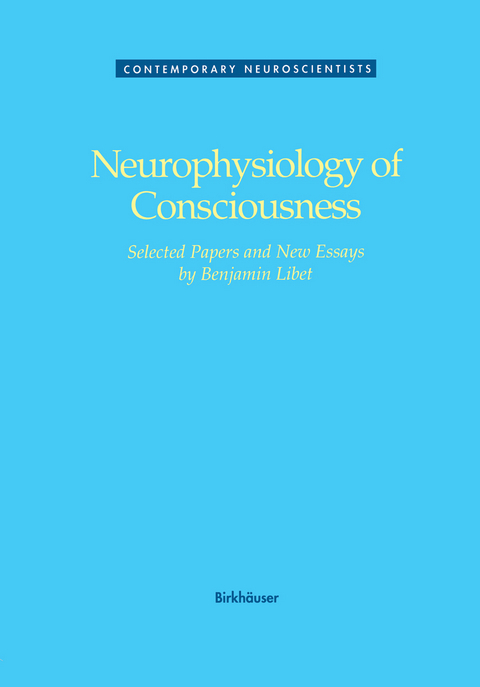
Neurophysiology of Consciousness
Birkhauser Boston Inc (Verlag)
978-0-8176-3538-1 (ISBN)
1 Production of Threshold Levels of Conscious Sensation by Ectrical Stimulation of Human Somatosensory Cortex (1964).- 2Cortical Activation in Conscious and Unconscious Experience (1965).- 3Brain Stimulation and the Threshold of Conscious Experience (1966).- 4Responses of Human Somatosensory Cortex to Stimuli below Threshold for Conscious Sensation (1967).- 5Electrical Stimulation of Cortex in Human Subjects, and Cscious Sensory Aspects (1973).- 6Cortical Representation of Evoked Potentials Relative to Conscious Ssory Responses, and of Somatosensory Qualitites — in Man (1975).- 7Cortical and Thalamic Activation in Conscious Sensory Eerience (1972).- 8Neuronal vs. Subjective Timing for a Conscious Sensory Eerience (1978).- 9Subjective Referral of the Timing for a Conscious Sensory Experience: Aunctional Role for the Somatosensory Specific Projection Stem in Man (1979).- 10 Retroactive Enhancement of a Skin Sensation by a Delayed Cortical Smulus in Man: Evidence for Delay of a Conscious Ssory Experience (1992a) 196.- 11 The Experimental Evidence for Subjective Referral of a Ssory Experience Backwards in Time: Reply to P.S. Churchland (1981).- 12 Brain Stimulation in the Study of Neuronal Functions for Cscious Sensory Experiences (1982a).- 13 Readiness -Potentials Preceding Unrestricted “Spontaneous” vs. P-Planned Voluntary Acts (1982b).- 14 Preparation- or Intention-to-Act, in Relation to Pre-Event Potentials Rorded at the Vertex (1983a).- 15 Time of Conscious Intention to Act in Relation to Onset oCerebral Activity (Readiness-Potential): The Unconscious Itiation of a Freely Voluntary Act (1983b).- 16 Unconscious Cerebral Initiative and the Role of Cscious Will in Voluntary Action (1985).- 17 Are the Mental Experiences of Will and Self-Control Significant for thePformance of a Voluntary Act? Response to Commentaries bL. Deecke and by R.E. Hoffman and R.E. Kravitz (1987a).- 18 Consciousness: Conscious, Subjective Experience (1987b).- 19 The Timing of a Subjective Experience. Response to a Cmentary by D. Salter (1989a).- 20 Conscious Subjective Experience vs. Unconscious Mental Functions: Aheory of the Cerebral Processes Involved (1989b).- 21 Control of the Transition from Sensory Detection to Sensory Awareness in May by the Duration of a Thalamic Stimulus: The Cerebral “Time-On” Factor (1991).- 22 The Neural Time-Factor in Perception, Volition and Free Will (1992b).- Elogue I: Some Implications of “Time-On„Theory.- Elogue II: A Testable Field Theory of Mind-Brain Interaction.- Permissions.
| Reihe/Serie | Contemporary Neuroscientists |
|---|---|
| Zusatzinfo | XXVIII, 404 p. |
| Verlagsort | Secaucus |
| Sprache | englisch |
| Maße | 178 x 254 mm |
| Themenwelt | Geisteswissenschaften ► Psychologie |
| Medizin / Pharmazie ► Medizinische Fachgebiete ► Neurologie | |
| Studium ► 1. Studienabschnitt (Vorklinik) ► Physiologie | |
| Naturwissenschaften ► Biologie ► Humanbiologie | |
| Naturwissenschaften ► Biologie ► Zoologie | |
| ISBN-10 | 0-8176-3538-6 / 0817635386 |
| ISBN-13 | 978-0-8176-3538-1 / 9780817635381 |
| Zustand | Neuware |
| Haben Sie eine Frage zum Produkt? |
aus dem Bereich


